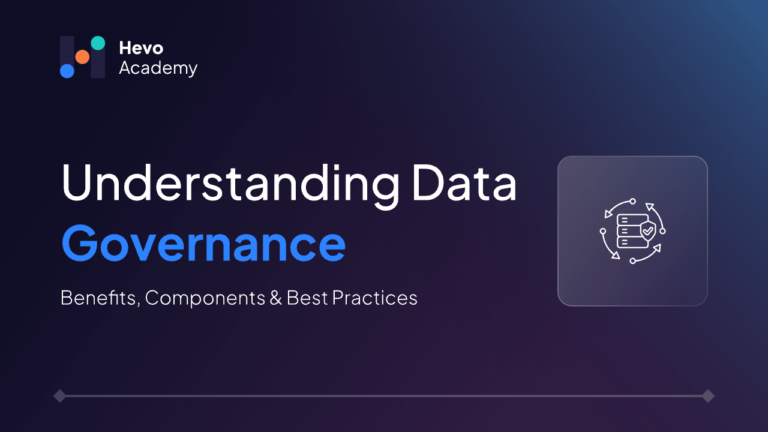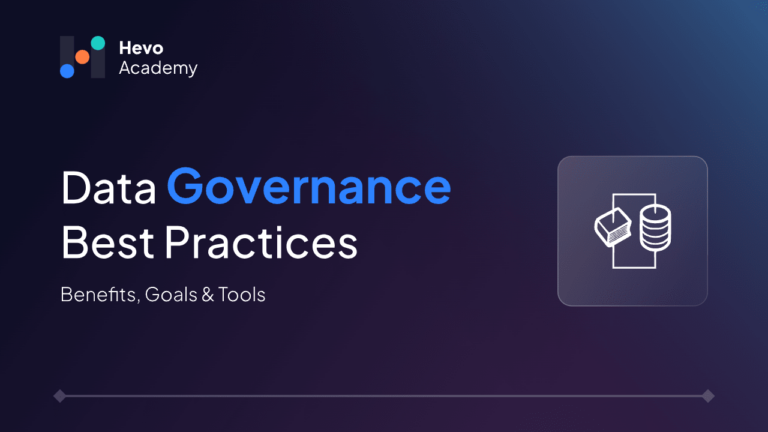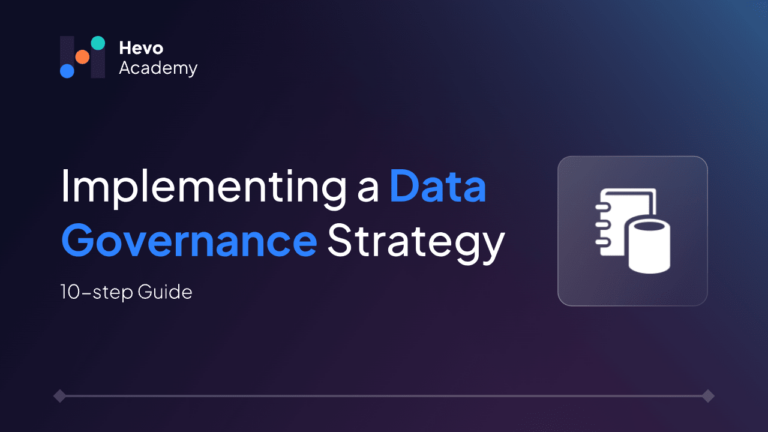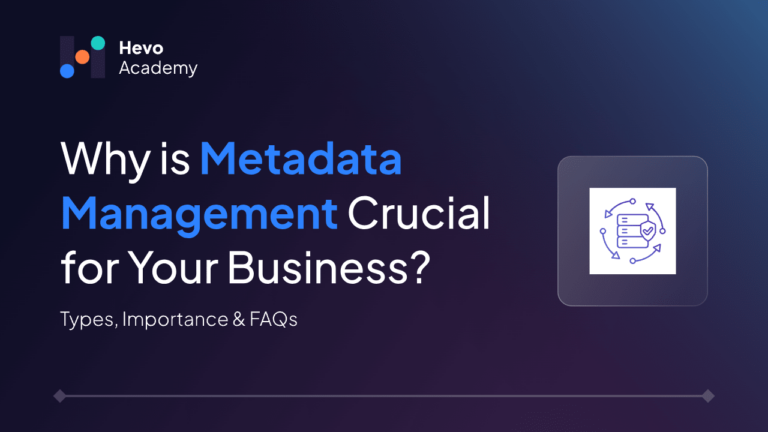A big company makes a million-dollar decision, only to find out later that the data on which the decision was based was faulty, and it has become a costly mistake. This becomes a tremendous nightmare; unfortunately, it has been a reality for many businesses. According to Gartner, “Every year, poor data quality costs organizations an average of $12.9 million.”
Table of Contents
Timur Yarnall, CEO of Neutronian, says that the costs of faulty data includes inaccurate insights, wasteful investments, lost productivity and ineffective marketing campaigns; all are leading towards huge financial losses.
Enters data governance – a valuable practice that educates the business on how to manage data properly in the most secure, accurate, useful, and safe manner.
What is Data Governance?
Essentially, data governance is the set of guidelines, policies, and standards that organizations use to manage and protect their data. Organizations leverage data governance to protect their data, control access and authorization and disperse it among employees for daily use. It is a framework to ensure that data is accurate, secure, and accessible. Take it as a rulebook for your data systems. Every piece of data from sales information to customer reports, is governed according to these rules. For organizations to align with best practices, Gartner’s guidance on data governance provides valuable insights into structuring policies and frameworks.
Strengthen your data governance strategy while Hevo seamlessly manages your data integrations. With 150+ connectors and real-time transformations, Hevo ensures your data is consistent, secure, and compliant.
Simplify governance and unlock efficiency—start your free trial with Hevo!
Get Started with Hevo for FreeWhy Data Governance is Crucial for Organizations
Data governance may sound like an expensive burden but what is even more expensive is the result of making data driven decisions based on unreliable data. Organizations often face several data governance challenges, including data silos, inconsistent data definitions, and ensuring compliance across diverse systems. According to Experian, “83% of businesses see data as an integral part of forming a business strategy, yet a complex data landscape is posing new challenges.”
The biggest data breach in history occurred in 2016 when Yahoo revealed that 3 billion users had been compromised in a series of data breaches between 2013 and 2014. There were 41 class-action lawsuits and a hefty fine of 35 million dollars for not disclosing the full details of the breaches. Had they invested more resources in stronger data governance, ensuring that the sensitive information of users is being protected, it would have been a different story. Without data governance, data can pose a security and validity risk and a significant threat to your organization.
Good data governance encourages organizations to streamline operations by eliminating data redundancy. It also helps in adhering to regulations and compliance, such as GDPR guidelines in Europe, which protect consumer rights to privacy. In May 2023, Meta was fined 1.2 billion euros by the Irish Data Protection Committee for not complying with GDPR. This fine serves as a clear warning to companies that the GDPR’s requirements must be taken seriously, and non-compliance can result in severe financial consequences.
Considering all these benefits and lessons, data governance is undoubtedly becoming an integral part of business. Companies that recognize this will stay ahead in the fast-evolving digital landscape.
Benefits of Implementing Data Governance
Data governance ensures the consistency, accuracy, and security of an organization’s data. It influences many positive aspects of the data infrastructure, such as:
- Better Data Quality: Data governance ensures the consistency and reliability of data in the organizations. Every organization should invest resources and rely on top-notch data quality to make better business decisions. Bad data quality is equivalent to bad decisions.
- Operational Efficiency: The last things you would want to face but will face in data are inconsistency and redundancy. Data governance streamlines processes and better resource allocation which reduces data redundancies and inconsistencies, saving money and time.
- Stronger Data Security: Sensitive information is protected by applying clear data framework and policies on accessibility of data, reducing the risk of data breaches. Data security helps organizations in complying with protection regulations such as GDPR.
- Improved Decision-Making: Good data drives good decision making. Accurate and complete data will be accessible, which leads to more effective business strategies.
- Increased Trust in Data: When data governance is applied properly, business trusts data more. It fosters better collaboration, operational efficiency and effective analytics.
Who’s Responsible for Data Governance?
Data governance is a multifaceted process that requires multiple roles in an organization:
- Chief Data Officer (CDO): The CDO leads the initiative and is the main custodian of the data governance. They are responsible for managing the entire data governance framework. They ensure that the data governance framework aligns with the organizational goals.
- Data Stewards: The data stewards are responsible for managing data on a daily basis. They manage operational aspects of data quality and policy. They ensure that data is clean, accurate and compliant with policies. They own primary datasets and are responsible for their maintenance and security.
- Data Committee: The Data Governance Committee provides guidance and ensures consistency of data aligning with the business objectives, mostly composed of senior executives and IT leaders who monitor the development and implementation of data governance policies.
- Data Custodians: These professionals are responsible for managing data in the technical aspects such as storage, backup and security. They ensure that tech infrastructure supports data governance policies.
- IT and Business Unit Leaders: These leaders ensure that their teams follow data governance policies and contribute to setting standards that align with specific business goals.
- Data Analysts and Data Scientists: While they are mainly responsible for transforming, mapping, analyzing and extracting value from data, they also play a part in ensuring that the data meets the required guidelines and policies.
- End-Users: Employees who work with data daily, such as marketers, sales teams, and customer service representatives, are also responsible for following data governance rules. They ensure that the data they input, access, or share is handled correctly.
Components of a Data Governance Framework
Data governance seems like a daunting task but just like every country requires policies and rules to function, data requires governance to be managed effectively. Aligning your data governance framework with sound data architecture principles is crucial for ensuring a solid foundation for managing and scaling your data. These key data governance components has to be followed to build a foundation of a successful data governance framework:
- Policies and Procedures: These dictate how the data is created, stored, accessed and protected. Without clear procedures, there is a high risk of mishandling of data.
- Data Standards: Standards and guidelines ensure the consistency of data across the organization. It’s like everyone speaking the same language—names, formats, and structures all need to align so that data makes sense no matter where it’s used.
- Data Owners: Data stewards and owners are the guardians of data. They lead any initiative regarding the datasets and ensure that the data quality and compliance is maintained according to the policies.
- Ownership and Accountability: Every dataset has an owner who is responsible for managing, updating and protecting the data. When ownership is unclear, mistakes happen and costs incur.
- Data Quality Management: Poor data quality leads to poor decisions. Data governance ensures that data remains reliable by monitoring it for accuracy, completeness and consistency.
- Data Security and Privacy: Sensitivity data has to be protected at all costs. Strong governance frameworks apply measures to guard against unauthorized access, breaches or misuse of data.
- Monitoring and Reporting: You need to track progress, measure success, and adjust policies as your organization and data grow. It can help in replanning the next steps if an initiative does not work in the favor of the business.
How to Implement a Data Governance Framework
Implementing data governance may feel complex but if we can break the process down into manageable steps, it becomes achievable:
- Form a Data Committee: Gather professionals and leaders from different business units and build a cross-functional team. The team will lead and guide the implementation process.
- Set Clear Goals: The committee will plan out the goals and objectives of the framework. They will identify the problems such as low data quality, weak security and bad compliance with regulations. Identifying the problem is the first and foremost step that can help you measure the success of the team.
- Audit Current Practices: Identify the gaps between the teams. How is the organization managing data? What’s working well? This audit will inform your strategy.
- Create Data Governance Policies: Develop clear policies that define how data should be managed. An effective data governance strategy aligns data policies with business goals, ensuring that data is consistently managed, secure, and accessible for decision-making.
- Assign Data Roles: Data stewards are responsible for managing data on a daily basis. We assign them to specific datasets to ensure compliance with the rules and to maintain data quality.
- Choose the Right Tools: Implement technology that supports your framework, such as data catalogs or data quality tools. The right software makes it easier to manage data across the organization.
- Focus on Training: Educate and train the employees about the new roles and responsibilities to ensure that the new policies are being practiced throughout the organization. Everyone who works with data should understand the governance framework.
- Monitor and Develop Iteratively: Data governance is not a fixed process; it is a continuous process that develops dynamically.
Also Read: Data Governance Pillars
Best Practices for Successful Implementation
- Start Small and Scale Gradually: Build your foundation by starting with a few essential data groups. Gradually add others later. With this method, you may demonstrate value and improve processes before implementing them throughout the entire organization.
- Leadership Support: If the top level management emphasizes and champions data governance, it is easier to gain the resources necessary to be secure.
- Build a Data-Driven Culture: Foster a culture where data is treated like fuel. Create high-quality data and train people on how to make it to benefit everyone.
- Frequent Communication: Data governance policies need to be understood by all stakeholders. Keep communication clear, simple, and continuous to ensure alignment across teams.
- Allocate Resources accordingly: Distinguishing data governance vs data management helps organizations allocate resources effectively, as governance focuses on policy and compliance, while management emphasizes operational data handling.
To not be confused between data governance and data lineage, read our blog Data Governance vs Data Lineage.
Real-world Use Cases
We can find numerous examples of successful companies using data governance effectively:
- HSBC (Banking): Employs data governance to comply with global regulations like GDPR
- Pfizer (Healthcare): Utilizes data governance to manage patient data privacy and comply with HIPAA regulations
- Walmart (Retail): Uses data governance to ensure product and customer data consistency across multiple sales channels
- AT&T (Telecommunications): Uses data governance for data lineage and auditing to track customer data across departments
Conclusion
Data is fuel for businesses in today’s digital landscape. Regardless of size, scale and profitability, organizations employ data to make informed decisions and gain competitive advantage.
Data governance is a must-have. Whether it is complying with data regulations, ensuring data privacy, or simply maintaining the accuracy and integrity of data, strong governance frameworks enable organizations to unlock the true value of their data assets.
Companies such as Google, Pfizer, Walmart and AT&T are already leading the way, demonstrating the power of data governance across multiple industries. These real-world examples demonstrate the transformative power of a well-implemented data governance approach, from safeguarding banking and healthcare to enhancing customer experience in retail and guaranteeing operational efficiency in manufacturing.
Frequently Asked Questions
1. What is data governance?
Data governance is the process of producing high-quality data by means of a set of guidelines, protocols, and regulations that enable decision-making and ownership. It is a framework that outlines information-related operations’ decision rights and accountabilities. It specifies who can take what actions with what information, when, under what circumstances, and using what means.
2. Why do we have to do data governance?
Data governance enables better data quality, improved operational efficiency, and driven decision-making. It also encourages organizations to streamline operations by eliminating data redundancy.
3. When should a company use a data governance framework?
When an organization requires to deal with data silos, conflicting business definitions, regulatory compliance, or issues with data quality, data governance should be put into place. When an organization is expanding, merging, or implementing new data-driven strategies, it is imperative to provide a uniform and safe data infrastructure.
4. What are the key components of a data governance framework?
The essential components of data governance include defined regulations for data management and usage, role assignments such as Data Stewards and CDO, and consistent processes to ensure data quality. It also involves safeguarding data security and privacy, classifying and documenting data with metadata management, and ensuring regulatory compliance while mitigating risks.






